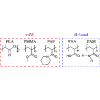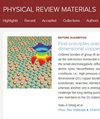Computing the thermal transport coefficient of neutral amorphous polymers using exact vibrational density of states: Comparison with experiments
IF 3.4
3区 材料科学
Q2 MATERIALS SCIENCE, MULTIDISCIPLINARY
引用次数: 0
Abstract
Thermal transport coefficient is an important property that often dictates broad applications of a polymeric material, while at the same time its computation remains challenging. In particular, classical simulations overestimate the measurements of in comparison to those of the experiments and thus hinder their meaningful comparison. This is even when very careful simulations are performed using the most accurate empirical potentials. A key reason for such a discrepancy is because polymers have quantum-mechanical, nuclear degrees of freedom whose contribution to the heat balance is nontrivial. In this work, two semianalytical approaches are considered to accurately compute by using the exact vibrational density of states . The first approach is based within the framework of the minimum thermal conductivity model, while the second uses computed quantum heat capacity to scale . The computed of a set of commodity polymers compares quantitatively with .

利用精确振动状态密度计算中性无定形聚合物的热传输系数:与实验的比较
热传输系数 κ 是一项重要的特性,通常决定了聚合物材料的广泛应用,但同时其计算仍然具有挑战性。特别是,与实验相比,经典模拟会高估κ 的测量值,从而阻碍了两者之间有意义的比较。即使在使用最精确的经验势进行非常仔细的模拟时也是如此。造成这种差异的一个关键原因是聚合物具有量子力学核自由度,它们对热平衡的贡献并非微不足道。在这项工作中,我们考虑了两种半解析方法,通过使用精确的振动状态密度 g(ν)来精确计算 κ。第一种方法基于最小热导率模型框架,而第二种方法则使用计算量子热容量来标度κ。一组商品聚合物的计算κ与κexpt进行了定量比较。
本文章由计算机程序翻译,如有差异,请以英文原文为准。
求助全文
约1分钟内获得全文
求助全文
来源期刊

Physical Review Materials
Physics and Astronomy-Physics and Astronomy (miscellaneous)
CiteScore
5.80
自引率
5.90%
发文量
611
期刊介绍:
Physical Review Materials is a new broad-scope international journal for the multidisciplinary community engaged in research on materials. It is intended to fill a gap in the family of existing Physical Review journals that publish materials research. This field has grown rapidly in recent years and is increasingly being carried out in a way that transcends conventional subject boundaries. The journal was created to provide a common publication and reference source to the expanding community of physicists, materials scientists, chemists, engineers, and researchers in related disciplines that carry out high-quality original research in materials. It will share the same commitment to the high quality expected of all APS publications.
 求助内容:
求助内容: 应助结果提醒方式:
应助结果提醒方式:


